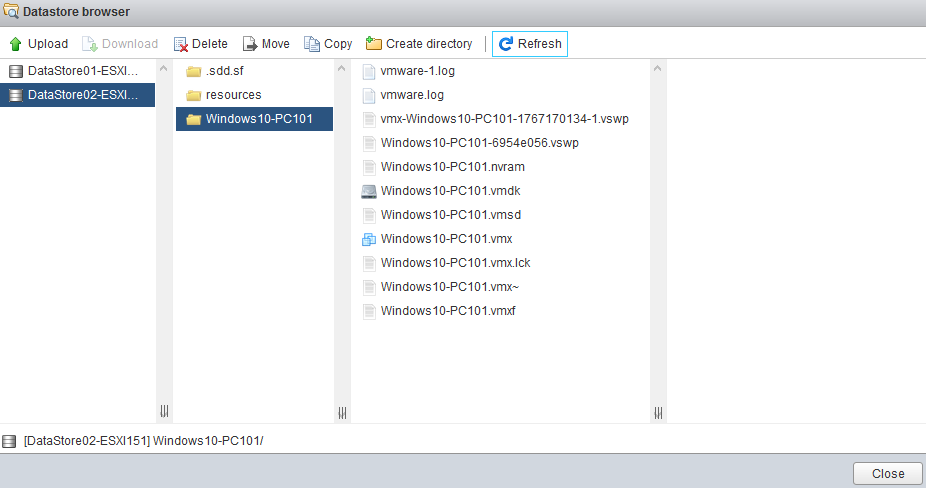introduction
When you create a virtual machine,
ESXI creates a set of files for that specific virtual machine.
Virtual machine files are stored in either the virtual machines directory or the working directory : Both directories are typically on the host system.
this is small article that will give you some details about VM file structure
most important VM files
Vmx - Virtual machine configuration file
- contains all the configuration information and hardware settings of the VM.
- Whenever you edit the settings of a VM, this file stores all of that information in text format.
- This file contains a wide variety of information about the VM, including its specific hardware configuration — i.e., RAM size, network interface card info, hard drive info and serial/parallel port info — advanced power and resource settings, VMware tools options and power management options.
- Although you can edit this file directlyto make changes to a VM’s configuration, don’t do so unless you’re sure you know what you’re doing.
- If you make changes directly to this file, make a backup copy first.
-flat.vmdk - Virtual machine data disk
- the actual content of that disk
Vmdk - Virtual disk characteristics
- text file containing descriptive data about the virtual hard disk
Nvram - Virtual machine BIOS or EFI configuration
- This small file contains the BIOS(basic input/output system) that the VM uses to boot.
- It’s similar to a physical server that has a BIOS chip that lets you set hardware configuration options.
- You can access the BIOS when a VM first starts up by pressing the F2 key.
- Whatever changes you make to the hardware configuration of the VM are then saved in the NVRAM file.
- This file is in binary format,
- if deleted, the VM automatically recreates it when you power it back on.
Other VM files
Vmxf - Additional virtual machine configuration files
Vmsd --. - Virtual machine snapshots
Vmsn - Virtual machine snapshot data file
Vmsp - Virtual machine swap file à
- you only see a VSWP file when you power on the VM à please note that [swap file = configured memory – reservation ]
- virtual machine swap file used to reclaim memory during periods of contention
Vmss - Virtual machine suspend fileà you only find a VMSS file when you suspend your VM
Log - Current virtual machine log file
-#.log - Old virtual machine log files
Conclusion
Understanding VMware virtual machine files can help ease management tasks and simplify infrastructure cleanup
ofcourse we will NOT see all VM files in our datastore currently : simply because VM just created a few minutes and there is NO operation on that VM yet



